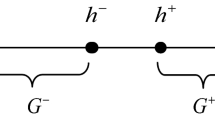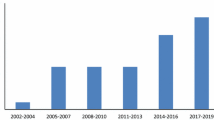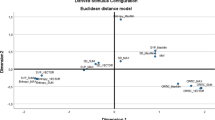Abstract
The use of composite indicators as a tool for ranking and making decisions is ever increasing in a world marked by the inequalities and competition in all domains. However, the dependence of countries ranking on the weighing scheme used to aggregate individual indices or sub-indicators, most of the time set by experts/stakeholders may weaken the credibility of composite indicators. One method which is able to overcome these limits is the “Data Envelopment Analysis” approach, particularly named “Benefit-Of-the-Doubt” in the context of composite indicators’ construction. We propose a revaluation of the Digital Access Index given that Information technology is the most important factor driving improvement in a wide array of areas critical for the quality of life for individuals as well as societies. We have shown that this method is more suitable for identifying trends and drawing attention to particular issues and also for setting policy priorities. In fact, the weights of the individual indices, used to compute the composite indicators are based on the data itself and are proper for the country under consideration. These weights contain adequate information in order to help policy-makers to better understand the nature of the new innovation economy and the types of public policies needed to drive innovation, productivity and broad-based prosperity for its citizens.



Similar content being viewed by others
Notes
The best value calculated and published by the ITU is 0.85, which corresponds to the Digital Access Index of Sweden in 2003.
References
Charnes, A., Cooper, W. W., & Rhodes, E. (1978). Measuring the efficiency of decision making units. European Journal of Operational Research, 2(6), 429–444.
Cherchye, L. (2001). Using data envelopment analysis to assess macroeconomic policy performance. Applied Economics, 33, 407–416.
Cherchye, L. & Kuosmanen, T. (2002). Benchmarking sustainable development: A synthetic meta-index approach. EconWPA Working Papers.
Cherchye, L., Moesen, W., Rogge, N., & Van Puyenbroeck, T. (2007). An introduction to ‘Benefit Of the Doubt’ composite indicators. Social Indicators Research, 82, 111–145.
Cherchye, L., Moesen, W., & Van Puyenbroeck, T. (2004). Legitimately diverse, yet comparable: On synthesizing social inclusion performance in the EU. Journal of Common Market Studies, 42, 919–955.
International Telecommunication Union. (2003). ITU digital access index: World’s first global ICT ranking. Press Release [online]. Available on http://www.itu.int/newsarchive/press_releases/2003/30.html. Accessed April 24, 2013.
Mahlberg, B. & Obersteiner, M. (2001). Remeasuring the HDI by data envelopment analysis. Interim report IR-01-069. Luxenburg, Austria: International Institute for Applied System Analysis.
Melyn, W. & Moesen, W. (1991). Towards a synthetic indicator of macroeconomic performance: Unequal weighting when limited information is available. Public Economics Research Paper, 17, CES, KU Leuven.
Pedraja, F., Salinas, J., & Smith, P. (1997). On the role of weight restrictions in data envelopment analysis. Journal of Productivity Analysis, 8, 215–230.
Roll, Y., & Golany, B. (1993). Alternate methods of treating factor weights in DEA. Omega, 21(1), 99–109.
Soupizet, J.-F. (2004). La Fracture Numérique: Mesure et Spécificités. NET SUDS, no 2, Août.
Storrie, D. & Bjurek, H. (2000). Benchmarking the basic performance indicators using efficiency frontier techniques. Report presented to the European commission, DG employment and social affairs.
Author information
Authors and Affiliations
Corresponding author
Rights and permissions
About this article
Cite this article
Gaaloul, H., Khalfallah, S. Application of the “Benefit-Of-the-Doubt” Approach for the Construction of a Digital Access Indicator: A Revaluation of the “Digital Access Index”. Soc Indic Res 118, 45–56 (2014). https://doi.org/10.1007/s11205-013-0422-8
Accepted:
Published:
Issue Date:
DOI: https://doi.org/10.1007/s11205-013-0422-8




